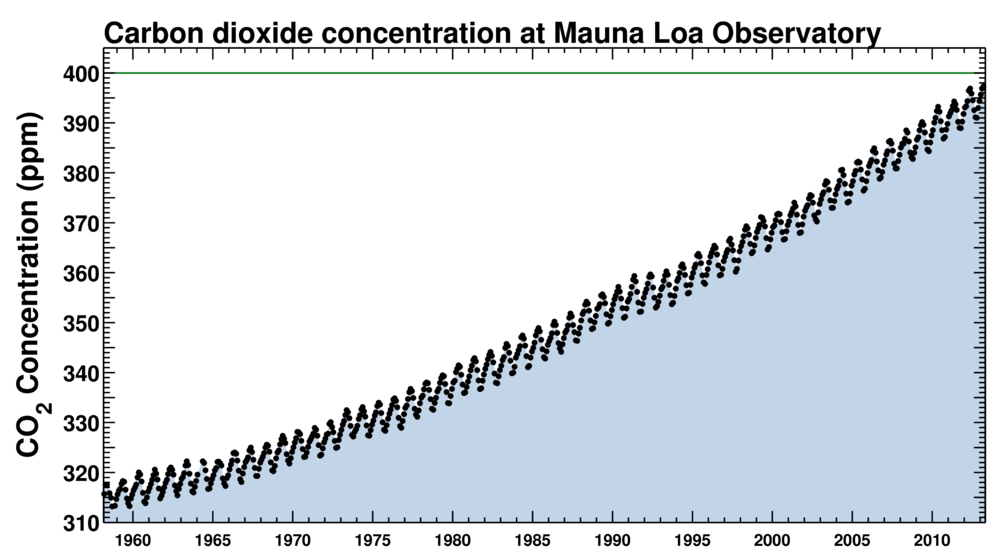The Twitter Account to Watch If You’re Worried About Climate Change
This May, the folks behind a Twitter account started four months ago are preparing to tweet an event that the planet has not seen in an estimated four million years.

That’s when the concentration of carbon dioxide in the earth’s atmosphere could hit or exceed 400 parts per million (ppm) for the first time. Yesterday’s daily average stands at 399.50, and May is the peak time of CO2 levels every year in the Northern Hemisphere. And of course, with climate change, the peak has been rising every year.
These measurements are being made at the famous Mauna Loa observatory in Hawaii, where in 1958, a scientist named Charles Keeling began documenting the fluctuating patterns of atmospheric CO2. With data collected far from major land masses, the “Keeling curve” is the longest unbroken record of globally rising CO2 concentrations. Alongside the U.S. government, researchers with the Scripps Institution of Oceanagraphy now run the Mauna Loa observatory and @Keeling_curve.
While Twitter is great and all, the most important inventions of our time will come from the those people who commercialize technologies capable of slowing the march to 500 ppm, or, less probably, bringing levels back down to 320 ppm, as it was when Keeling first began his studies
As MIT Technology Review’s publisher Jason Pontin wrote in October in his essay, “Why We Can’t Solve Big Problems,” there are still large economic and political hurdles that block progress towards renewable energy technologies that can compete on price with fossil fuels. At the moment, these technologies don’t exist. What’s needed to get there is both research funding and some kind of price on carbon. So while talking about 400 ppm is a symbolic milestone, here’s hoping the negotiators at the U.N. climate talks being held in Bonn, Germany are paying attention.
Keep Reading
Most Popular
Large language models can do jaw-dropping things. But nobody knows exactly why.
And that's a problem. Figuring it out is one of the biggest scientific puzzles of our time and a crucial step towards controlling more powerful future models.
The problem with plug-in hybrids? Their drivers.
Plug-in hybrids are often sold as a transition to EVs, but new data from Europe shows we’re still underestimating the emissions they produce.
Google DeepMind’s new generative model makes Super Mario–like games from scratch
Genie learns how to control games by watching hours and hours of video. It could help train next-gen robots too.
How scientists traced a mysterious covid case back to six toilets
When wastewater surveillance turns into a hunt for a single infected individual, the ethics get tricky.
Stay connected
Get the latest updates from
MIT Technology Review
Discover special offers, top stories, upcoming events, and more.